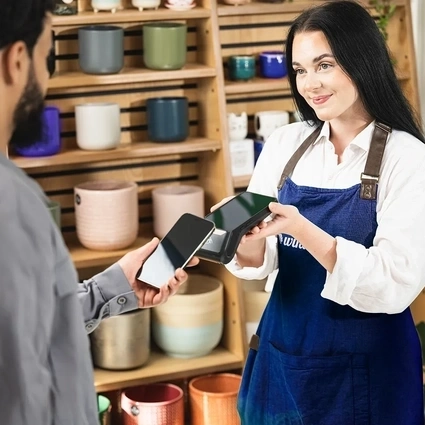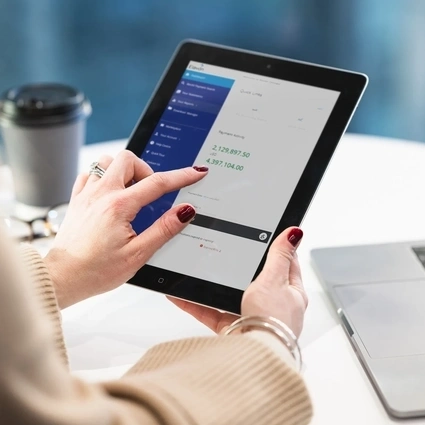- Optimised web design: make browsing a breeze
- Speed demons: fast loading times to turn clicks into cash
- Mobile mastery: optimising for on-the-go shoppers
- Boost your average order value: easy wins for bigger profits
- The art of the checkout: simple steps to more sales
- Sell more with smart strategies: upselling and cross-selling
- Conversion magic: turning visitors into buyers
- Optimised web design: make browsing a breeze
- Speed demons: fast loading times to turn clicks into cash
- Mobile mastery: optimising for on-the-go shoppers
- Boost your average order value: easy wins for bigger profits
- The art of the checkout: simple steps to more sales
- Sell more with smart strategies: upselling and cross-selling
- Conversion magic: turning visitors into buyers
Why should I optimise my website for mobile?
Smartphones are becoming increasingly popular for shopping online, with 91% of online shoppers using their phones to purchase products. So, it makes sense to maximise your ecommerce website to make mobile sales fast and frictionless for your customers.
For ecommerce business owners, encouraging smartphone sales means they need to ensure their online shop is mobile optimised.
Optimising your website for mobile sales simply means ensuring your site is formatted in a way that is easy to view and navigate on a mobile device. Optimising your website for mobile can help to improve customer experience, making it easier to complete a purchase and therefore increasing conversion rates and revenues. It can also aid in improving website speed, which in turn can improve how well your website performs in mobile search results.
Mobile commerce sales are expected to account for 62% of all retail sales by 2027

With the knowledge that more and more people are using a mobile to browse the internet and shop online, you need to make sure there are no barriers or friction when a customer visits your website. In today’s world, people are often busy, stressed and impatient. They will not wait for a page to load or try to work out how to add a product to their carts. So, you need to make their experience a positive one – otherwise they won’t convert and make the purchase.
Mobile ecommerce or ‘m-commerce’ is taking off in a big way globally. Global m-commerce leaders are emerging, particularly across South-East Asia in Chinese, Japanese and South Korean markets.
Why you should consider optimising your site for mobile
Improves user experience
You need to ensure your customers can navigate your website with no problems or friction, so you must make sure that the appropriate mobile optimisation has been made. If you create an all-round positive user experience, your customers will come back!
Increase the average time spent on your site by mobile users
A mobile optimised website will keep your smartphone users on your site for longer and see them engage a lot more.
Websites load faster
When you optimise your website for smartphones, loading times greatly decrease. This is because pictures and text will automatically render at the correct resolutions.
Better search results for your site
If you have two versions of your website, traditional and mobile, the smartphone version will be displayed first for mobile users. This means that you will be way ahead of your competitors if they do not have a mobile optimised site, by being further up in the search results.
“It’s all about removing friction. Remove every barrier possible between the customer and the checkout so it’s as easy as possible to pay. Some pain points are necessary – like fraud checks – but removing obstacles to paying can only improve your customers’ experience and drive up sales.
James King, Head of Professional Services, Elavon Europe
Cart abandonment rates on different devices
According to Barriliance, almost 70% of shoppers abandon their carts, but people behave differently when shopping on desktop compared to tablets and mobile devices:
Desktop
73% of customers abandon their carts on desktop.
Tablet
On tablets, cart abandonment rate goes up to 80.74%.
Mobile
Mobile users have the highest cart abandonment rate, with 85.65% of shoppers failing to make it to checkout. However, unlike traffic from tablet devices, which make up a tiny percentage of ecommerce sessions, mobile traffic accounts for more than two-thirds of all ecommerce sessions, at 68%.

Increasing mobile website traffic is not the only reason to ensure that your website is mobile optimised. With Google’s mobile-first indexing, sites that have been optimised for mobile users will rank higher in search engine results. This can allow ecommerce stores to reach a wider pool of potential customers.
Taking the time to invest in mobile optimisation techniques can also help to increase conversion rates on mobile devices. Ensuring your site is easy to navigate via a smartphone is becoming increasingly important for sales revenue. Optimising for mobile also creates a more consistent user experience and can serve to enhance your brand image and ensure your customers keep returning to your store.
“Smartphones have transformed the behaviour of almost all consumers and they’re increasingly demanding a uniform experience across multiple sales channels.”
Michael Bosshammer, Head of Retail, Elavon Europe
Six ways to optimise your site for mobile
Your website is often the first place of contact that your customers will encounter. You’re far more likely to make a sale or retain a customer if you provide mobile visitors with a site that is accessible and as fully functional as on a PC or laptop. It makes sense to maximise your ecommerce website to make mobile sales fast and frictionless for your customers. Here are our six top tips for optimising your website for mobile.
Nearly half of online consumers prefer to check out as a guest for two key reasons: they believe it’s faster than creating an account, and they don’t have to input as much personal information.
Most (70%) of mobile app users will abandon an app if it takes too long to load. A one-second delay in response can result in a 7% loss in conversion, and nearly one in every two apps are uninstalled within the first month of download.

Mobile online shopping (or m-commerce) is quickly becoming the new normal. Ensuring that your ecommerce website is optimised for all your website visitors will allow your site to remain competitive and help prevent cart abandonment.





